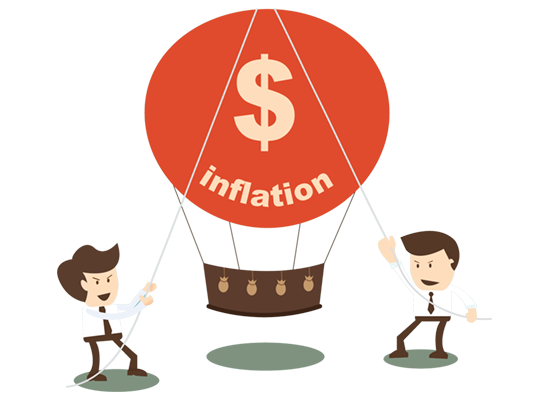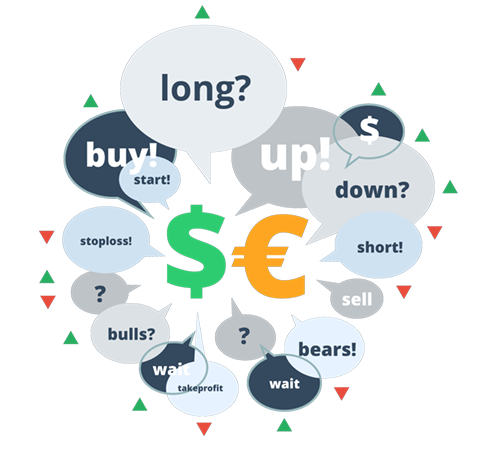Different
Types of Risk
Further reading (if you are interested)
The following is a summary of the risks of investing. It is not an exhaustive list. There is a lot of stuff here, and it is all important, but don't let risk paralyze you. Remember that returns are your reward for the acceptance of well-considered, calculated, risk-taking.
So here goes:
Credit Risk
Credit Risk is the probability that the issuer of an investment (be it a stocks or bond) will go bankrupt and be unable to fully pay its obligations to you. A lower credit rating means more credit risk.

If a rating agency downgrades a company's credit rating, then the short-term impact will likely be a sizeable drop in that company's stock price. That is volatility.
If the company can turn things around, by say firing the old CEO and hiring a new one who has a different strategy, then your long-term risk (i.e., the chance of the permanent loss of your investment) is reduced and the initial stock price drop was a buying opportunity.
If, however, the new CEO also fails, there may be a risk that the value of your investment drops to zero, i.e., the company goes bankrupt.
Since small companies don’t have the balance sheet strength, brand, supplier relationships, etc. of big companies, small companies tend to go bankrupt easier than big companies. That is one of the main reasons to reduce risk by focusing your investments on stocks in bigger companies that can weather the inevitable storms that appear over a company's lifetime.
Interest Rate Risk
Interest rates are the cost of borrowing money, but there are different types of interest rates.
There are short-term interest rates like the Bank of Canada rate, or the Prime Rate that banks charge on your line of credit.
There are also long-term rates, like 10- or 20- or 30-year bond interest rates.
Believe it or not, the general level of interest rates, both short-term rates and long-term rates, are not always low. Interest rates can go up. When interest rates go up fast, stocks and bonds prices will fall.
In general, the stock market rises when long-term interest rates are higher than short-term rates. Why?
Because when long-term interest rates are higher than short-term interest rates, it means companies want to borrow money to invest in their businesses, because they have a favourable economic outlook. The economy is growing!
The inverse is also true: a sign of a weakening economy and weaker stock prices occurs when long-term interest rates decline to be at, or even lower than, short-term rates. Companies don’t want to borrow to invest, because they don’t like what they see in the future. When long-term rates are declining or already too low, central banks around the world, including the Bank of Canada, start to lower their short-term rates to encourage people to borrow more money to buy things like houses or cars, to get the economy going again.
Historically, when central banks have cut short-term interest rates, that has buoyed stock prices.

Some commentators are concerned that central banks have been too active since the 2008 financial crisis and have kept interest rates too low for too long, which has distorted the stock markets and other markets, perhaps making them artificially high.
Inflation Risk
Inflation is the decline in the purchasing power of money due to a general rise in prices. If inflation, also known as the Consumer Price Index (CPI) is 2% per year, the value of your money will be cut in half in 36 years, (if your not sure about this, see Investment Piece #1).

It also means that you will have to make exactly twice as much money as you make today simply to maintain the same standard of living 36 year years from now.
When you stop and consider that you will live possibly 80 or 90 years, you can see that inflation protection is a major consideration of long-term investing.
From an investment perspective, the best defence against inflation is owning stocks of companies that grow their dividends faster than the rate of inflation.
Foreign Currency Risk
Canada represents only 2% of the world economy. That means it is prudent to invest some of your money outside Canada, i.e., to buy foreign stocks or exchange-traded funds ETFs.
When you buy a foreign stock, you must exchange Canadian dollars for the foreign currency that stock or ETF is issued in, such as US dollars or Euros, etc.
The exchange rates (i.e., prices) of foreign currencies vary daily and can vary significantly. If you own a stock or ETF in a foreign currency and the Canadian dollar rises, the value of your foreign investment will go down. Of course, the opposite is true as well: when the Canadian dollar goes down, the value of your foreign investment goes up.
You can reduce the impact of foreign currency fluctuation on your portfolio by hedging – i.e., buying an exchange-traded fund (ETF) that removes currency risk for you.
When you are within five years of needing to draw on your investment portfolio, it is wise to gradually move 50-80% of your foreign portfolio into hedged investments. That way you are diversified and the impact of a change in exchange rates will be muted.

It is relatively easy to hedge a foreign ETF portfolio, as major ETF companies like Vanguard and iShares both offer hedged and unhedged ETFs covering the same major markets.
Foreign Market Risk
By foreign markets, I really mean those outside the US and Canada. These markets carry more volatility and risk because they may be less regulated and have lower standards of financial reporting. Foreign investments can also be affected by social, political, or economic instability.
The volatility and risk associated with foreign markets can be managed by primarily investing in large, developed country markets such as Europe, Japan and Australia, and allocating a much smaller percentage of your investments to developing countries such as India, Brazil and China. Once again, it is better to get your foreign market exposure by sticking to larger ETF companies such as Vanguard or iShares.

Liquidity Risk
Liquidity refers to the speed and ease with which an asset can be sold and converted into cash. Certain assets, especially smaller companies, may not be easy to sell in a down market. Once again, owning large-capitalization, dividend-paying stocks helps to manage, but not eliminate, the volatility associated with liquidity.
Borrowing Risk
Some people borrow money to finance the purchase of their investments. This involves significant risk and is not recommended for people who are new to investing or don't have a steady job. If you borrow money to buy stocks, and the stock prices decline, you still have to pay back the full amount of the loan. Having said that, the interest you pay on loans you take out to invest is tax-deductible.
However, if the market has just dropped 30 to 40%, and you have a secure job, and you have more than 10 years to invest, you may consider borrowing to invest in large-capitalization, dividend-paying stocks, as the dividends you collect will likely exceed the interest you pay on the loan. Always use extreme caution when borrowing to invest.
Exchange-Traded Fund (ETF) and Mutual Fund Risk
ETFs and mutual funds are securities that hold a large number of different stocks that are designed to match an index or specific investment objective.
In addition to normal market risk, the risk associated ETFs and mutual funds is that they may fail to track their index or specific investment objective effectively, i.e., they might underperform their investment objective.
Some ETFs and mutual funds may also employ leverage, (i.e., they may borrow money to invest – see above), trade at a discount to their net asset value, or become so unpopular they may not be maintained. Once again, this volatility and risk can be managed by sticking to large, broad-based, low-cost, unlevered ETFs, such as Vanguard and iShares.
Don't Let Risk Paralyze You

Now, I know what you are thinking: “There is a lot of stuff I have to be worried about! I have worked hard for the money I have and I really don’t want to lose it.”
But don’t let risk paralyze you into inactivity. If you don’t invest, inflation is a real risk that will destroy the value of your money over time. Not investing is not an option.
The good news is that, if you have 10, 20 or more years to invest, then two very powerful tools, asset allocation and diversification, will help to manage your risk, (i.e., a permanent drop in the value of your portfolio).

